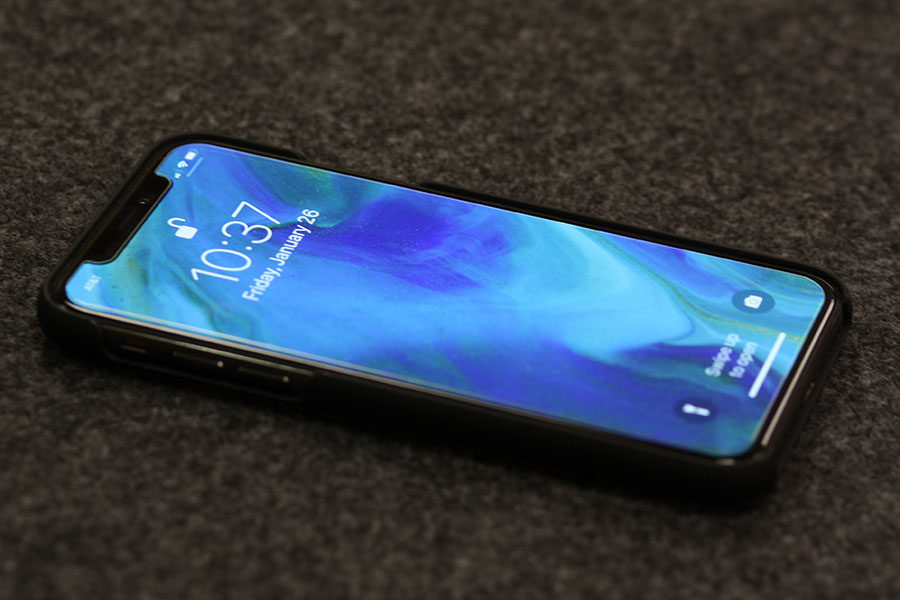iPhone X offers superior smartphone for high cost
Apple released the iPhone X on Nov. 3, 2017.
On the chilly night of Friday, Oct. 27, while the rest of my family snoozed comfortably in their beds, I sat wide awake in front of my computer screen with jubilance and anticipation, for this was no ordinary late night. This was the night Apple’s newest product became available for pre-order. Several weeks later, on Monday, Nov. 21, I came home to find a small, white, sleek box in the mail. I opened it up to reveal a technological masterpiece: the iPhone X.
With the arrival of the iPhone X, Apple has ushered in a new design and new features that will forever change the course of smartphone history. Sporting a high-tech facial scanner in replacement of the fingerprint scanner and an elegant screen that occupies nearly the entirety of the phone’s face, the iPhone X proves itself to be the future of Apple and the entire smartphone industry.
Although the iPhone X is undoubtedly the best phone one could ask for in this day and age, it does come with a heavy cost. The base-model 64GB iPhone X costs $999, and the 256GB version costs $1,149. Although I do believe the phone lives up to this monumental price tag, few people are willing to drop $1,000 on a cell phone.
The iPhone X is exceedingly fast through the power of the A11 Bionic Chip. Load times have never felt smoother in an iPhone, and browsing the web and other apps is remarkably more responsive through the use of Force Touch. Additionally, the new 5.8 inch screen enables videos and sites to be viewed in a larger size, although not all apps and videos have been updated to make use of this added space. Speaking of videos, the iPhone X supports HDR10 with a 246×1125 resolution and an OLED screen. This means vibrant colors and therefore a gorgeous viewing experience. The only downside to this is the fact that repairing or replacing a broken OLED screen costs several hundred dollars.
Of course, the most obvious change in the iPhone X is the lack of the traditional home button as this is what enables the phone to sport its elegant screen. Without a home button, many of the simple gestures and controls iPhone users have long been accustomed to are different. For example, in order to exit an app, one must swipe up from the bottom of the screen. These changes are expanded upon further through the notches in the top corners of the screen that contain information like the time and battery life. Although it was a bit disorienting getting used to these changes at first, after a couple of days, I grew to appreciate the new changes more than their predecessors.
Face ID uses the front-facing camera to scan the user’s face and unlock the phone. Surprisingly enough, this feature is responsive and reliable, with the phone successfully unlocking the majority of the time. This new feature works with glasses, hats and even in the dark. (This feature also enables the enjoyable but also virtually useless Animojis.) Furthermore, the 12-megapixel dual-lens rear camera is truly top of the line. It includes optic stabilization, 2x optical zoom and many more groundbreaking features. This camera can also capture 4K video at up to 60 fps.
The battery life of the iPhone X is nothing spectacular, but it still offers a leg up over previous models. What is unique about the iPhone X’s battery is its compatibility with wireless charging. This feature works even if the phone is in a case, and Apple is set to release a wireless charging pad later this year. The phone can also be charged with the standard Apple charger.
All in all, the iPhone X is a phenomenal phone equipped with the cutting edge technology that will characterize the future of the smartphone industry. Although the cost of this luxurious device is high, those who purchase this device will experience the ultimate Apple experience.

Hey there! I’m Braden Lefevre, and I am a senior at Canyon High. This is my third and final year to serve as a member of The Eagle’s Tale Staff, and I am elated and honored to serve as an associate editor of this stellar publication. I am also the...











